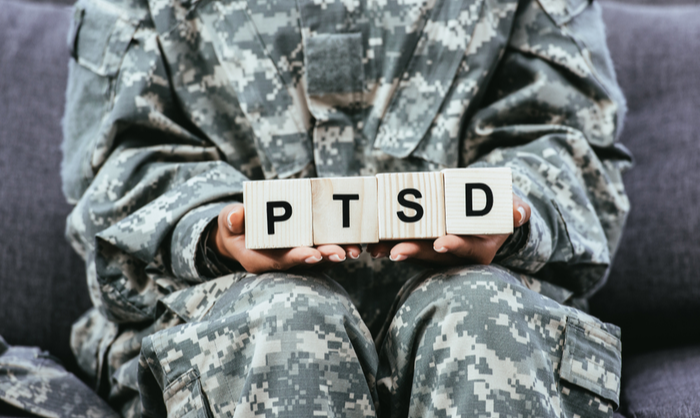Content warning: This post compares helping veterans with PTSD to helping a mother have a healthy birth.
During the last session of my first case using cognitive processing therapy, I realized that cognitive processing therapy has a lot in common with the business of delivering babies.
Let me give you some context. I am a physician assistant turned psychologist. During my physician assistant training, many years ago, I delivered eight babies. I never expected to revisit that experience. But I did when I used cognitive processing therapy (CPT) to treat clients with posttraumatic stress disorder (PTSD) during my internship at a Veterans Administration hospital.
I chose to train at a VA because I wanted training in evidence-based therapies. Having a body of research supporting the use of an intervention is very important to me. I was excited to go through the training with my cohort and start treating clients with PTSD. We received our formal training and were placed in consultation groups to discuss our cases during weekly group supervision. We were ready and eager to start.
CPT for PTSD is a 12-session cognitive-behavioral intervention that addresses maladaptive cognitions and the associated avoidance that maintains the PTSD symptoms. This intervention is based on the assumption that the individual never fully processed the trauma but developed “stuck points,” that is, maladaptive beliefs associated with the traumatic event.
These beliefs include beliefs about the cause of the traumatic event and about the rest of the world. The five important areas commonly affected include safety, trust, power and control, esteem, and intimacy. In therapy, these beliefs or “stuck points” start to become evident when the clients write their “impact statement” about their traumatic event.
Ideally, after a traumatic event, individuals have the opportunity to process the event with the help of supportive others. The new information that the trauma brings into the individual’s life is incorporated into pre-existing beliefs so that the individual is able to function well.
In a sense, the individual moves into acceptance of the traumatic event and away from maladaptive self-blame, erroneous other-blame, guilt, and shame. The individuals are then free to grieve and recover. This is the goal of CPT: being free to grieve and recover.
The Burden of PTSD
For clients with PTSD, this natural recovery process is halted. For veterans, it is part of their job’s demands. The “mission” is first, and they learn to avoid thinking about the trauma event while they are busy with the demands of their jobs. Regretfully, for many, this avoidance strategy continues after they return from combat.
The burden of this avoidance strategy is evident. In an attempt to avoid reminders of the traumatic event, they may limit their lives, isolate themselves from others, and engage in substance use. Within these narrow lives, they stop being themselves and become unrecognizable to family and friends. Life becomes unmanageable and dissatisfying, but asking for help means that they are rejecting their training. They often express, “I don’t want to re-live it,” “It doesn’t bother anyone else,” and, “I should be over it” as a matter of fact and principle.
For these reasons, treatment is presented to veterans as a team effort, in the sense that the therapist becomes part of their unit and joins the war against PTSD symptoms. How, then, is using CPT for PTSD similar to delivering babies?
Controlled Chaos
Well, delivering a baby can be seen as a “controlled chaos” situation. In a delivery, everything is sequential, but anything can happen at any time during the process. The person delivering the baby monitors and paces the birth so that the baby is not delivered too fast, which could lead to undue trauma for the baby and the mother.
Other team members around the person delivering the baby are there to assist. When the birth is imminent, specific steps include making sure that the cord is not around the baby’s neck, and that the airway is clear so the baby can take the first breath unhindered. All steps have a reason.
Then, the baby is born. For a magical moment, you hold this new person while they take their first breath, you hear the cry, and you know all is well. Then, you give the baby back to mother, the cord is cut, and the rest of the delivery proceeds.
The same happens during CPT. You have a “controlled chaos” sequence of twelve sessions where anything may happen. You know the end goal that you hope for, but you do not know what will happen along the way.
It is not very clear in the beginning what the “stuck points” are, and part of your job is to pace the work. The whole endeavor looks painful and messy as the client struggles with the trauma they have been avoiding for a long time. You are keeping an eye on the protocol and an eye on the client simultaneously. All steps have a reason. You want the process to continue; you are pacing, coaching, managing the inevitable reemergence of avoidant tactics. You know that you have others around you, and they are there to assist. You want the new “self” to be born and take its first breath unhindered.
Then in the last session, this beautiful new “self” is born as the “stuck points” are left behind. You hear your patient read their final “impact statement,” and they see themselves in a new light. You hold this new “self,” the “self” that always was, for a brief second. It is a magical moment. Then you give it back since it does not belong to you. It belongs to the person who gave birth to it, your client. You see, CPT is in the business of delivering babies.
In the environment of this “controlled chaos,” the progression may not be smooth, and successful completers are a joy to hold, but just for a moment. They did the work, and the therapist was there to facilitate the work. For those who do not complete, I chose to see them as difficult births that have not happened yet.
Through it all, I was grateful to have a team behind me, ready to assist. This work has been exciting, terrifying, and fulfilling. It was something unexpected from my training, that I delivered babies again. This gave me perspective and grounded me.


